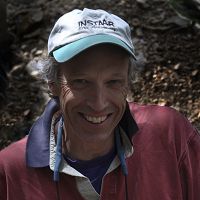Foster et al., 2015
Using 10Be to deduce rates of landscape evolution and mobile-regolith residence times in Gordon Gulch, Boulder Creek CZO
Foster, M.A., Anderson, R.S., Wyshnytzky, C.E., Ouimet, W.B., Dethier, D.P (2015)
GSA Bulletin 127 (5/6): 862–878
-
Boulder, GRAD STUDENT
-
Boulder, INVESTIGATOR
-
Boulder, INVESTIGATOR
Abstract
Sediment production on hillslopes affects the supply of sediment to the fluvial systems with which they are coupled. Aggradation or erosion of alluvium occurs when sediment supply is not equally matched with stream transport. In the Colorado Front Range, basin-averaged denudation rates, calculated from 10Be concentrations in stream sediments, indicate that small basins are producing sediment at a rate of ~2.5 cm/ka (Dethier and Lazarus, 2006). This is consistent with average sediment production rates of ~3.1 cm/ka that we calculate using 10Be from hillslope sites within the Boulder Creek CZO.
Citation
Foster, M.A., Anderson, R.S., Wyshnytzky, C.E., Ouimet, W.B., Dethier, D.P (2015): Using 10Be to deduce rates of landscape evolution and mobile-regolith residence times in Gordon Gulch, Boulder Creek CZO. GSA Bulletin 127 (5/6): 862–878. DOI: 10.1130/B31115.1
 This Paper/Book acknowledges NSF CZO grant support.
This Paper/Book acknowledges NSF CZO grant support.
Explore Further



